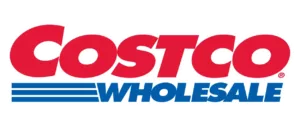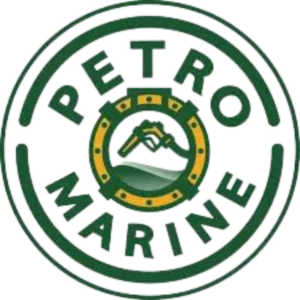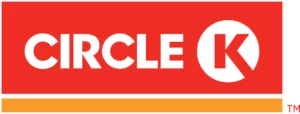The Essential Guide To Supply Chain Network Design
Supply chain network design is essential for a successful business. It shapes efficiency, cost-effectiveness, and profitability. In this blog, we’ll simplify supply chain network design.
What Is Supply Chain Network Design?
Supply chain network design involves strategically planning and optimizing a company’s supply chain structure. It includes decisions like choosing manufacturing locations and distribution centers and determining transportation routes and inventory levels.
Enroll – Supply Chain Management
How Does It Work?
- Data Collection and Analysis: Start by gathering data on current operations, including supplier locations, transportation costs, demand patterns, and inventory levels. Advanced analytics tools are often used for data processing.
- Model Development: Use the data to create mathematical models that simulate various scenarios, allowing for “what-if” analysis.
- Objective Function Definition: Clearly define your goals, whether it’s minimizing costs, maximizing service levels, or a combination of both.
- Constraint Identification: Identify limitations, such as budget constraints, capacity limits, and lead time requirements.
- Scenario Analysis: Test different scenarios, like changing distribution centers or transportation routes, against your objectives.
- Optimization: Employ mathematical optimization techniques to find the best combination of factors that meet your goals while respecting constraints.
- Implementation: Put the optimal network design into action, which may involve building facilities, changing suppliers, or renegotiating contracts.
- Monitoring and Continuous Improvement: Monitor network performance using real-time data and make necessary adjustments to adapt to market changes.
Enroll now – The Comprehensive Supply Chain Network Design Course
Factors in Supply Chain Network Design
Several factors impact network performance:
- Customer Demand: Understand customer demand patterns to determine distribution center locations and inventory levels.
- Transportation Costs: Analyze shipping, trucking, and customs fees to inform production and distribution center locations.
- Inventory Management: Efficiently manage inventory to balance costs and stockouts.
- Lead Times: Shorten lead times with localized distribution centers or production facilities.
- Market Access: Proximity to target markets can reduce costs and delivery times.
- Regulatory Compliance: Adherence to local and international regulations is essential.
- Economic Conditions: Consider currency exchange rates and labor costs.
- Supply Chain Risks: Assess and mitigate risks like natural disasters and supply chain disruptions. Designing a resilient network also helps minimize supply chain disruptions, ensuring smoother operations during unexpected events.
- Environmental Impact: Minimize the carbon footprint and adopt sustainable practices.
- Technology and Infrastructure: The availability of technology infrastructure influences network decisions.
Enroll – Digital Transformation Strategy (Course)
Types of Supply Chain Network Design
Various approaches exist:
- Optimization-Based Design: Uses mathematical models to find the most cost-effective network configuration.
- Heuristic-Based Design: Prioritizes practical solutions for quick decision-making.
- Scenario-Based Design: Evaluates different scenarios to assess their impact.
- Green Supply Chain Design: Focuses on reducing environmental impact.
- Collaborative Design: Involves supplier and partner collaboration.
- Customized Design: Tailored for industries with specialized needs.
Enroll – Supply Chain Management (Course)
Is Supply Chain Network Design A Core Process?
The decision to consider it a core process depends on your strategy:
Why It Should Be Considered a Core Process?
- Competitiveness: It directly impacts competitiveness by reducing costs, improving service, and enabling agility.
- Alignment with Strategy: Aligns with business goals and objectives.
- Cost Optimization: Allows for continuous cost optimization.
- Risk Management: Builds resilient networks.
- Customer Satisfaction: Enhances customer satisfaction.
Enroll – Operations Management 2 – Process Mapping & Supply Chain
Why It Should Not Be Considered a Core Process?
- Resource Constraints: Smaller companies may outsource this function.
- Industry Specificity: Not critical for all industries.
- Focus on Core Competencies: Some prefer to focus on core competencies.
- Dynamic Nature: For businesses with rapidly changing needs, extensive design resources may not align with agility.
Enroll – Best Practice Procurement Training Course
Making It a Core Process: Different Ways
- Executive Sponsorship: Gain support from top-level executives.
- Cross-Functional Teams: Establish teams with members from various departments, such as logistics, procurement, and finance.
- Data-Driven Decision-Making: Use real-time data for accurate modeling.
- Regular Review and Updates: Treat it as a continuous process.
- Integration with Strategic Planning: Align with broader business strategy.
- Technology Adoption: Invest in design software and tools.
- Supplier Collaboration: Collaborate closely with suppliers.
- Performance Metrics: Define KPIs.
- Scenario Planning: Develop scenarios for proactive decision-making.
- Training and Skill Development: Invest in training programs.
- Risk Management: Integrate risk assessment.
- Alignment With Sustainability Goals: Consider sustainability
Explore: Business Strategy Courses
Choosing Coggno for Supply Chain Network Design Training
Selecting Coggno offers several advantages:
- Comprehensive Course Catalog: Offers various supply chain network design courses.
- Expert Instructors: Partners with top instructors and subject matter experts in this field.
- Flexibility and Convenience: Online learning at your own pace, on your schedule, and from anywhere.
- User-Friendly LMS: Easy access, managing, and tracking training progress.
- Customized Learning Paths: Tailor your training by selecting courses that align with your needs.
- Scalable for Organizations: Suitable for small and large teams.
- Cost-Effective Solutions: Affordable and high-quality training.
- Certifications and Compliance: Offers certifications that can be crucial for career advancement and compliance requirements.
- Exceptional Customer Support: Provides excellent round-the-clock customer support.
Enroll – 11000 Foundations Of Personal Branding
In Conclusion
In today’s competitive landscape, supply chain network design is strategic. Invest in training to maximize its benefits.



















